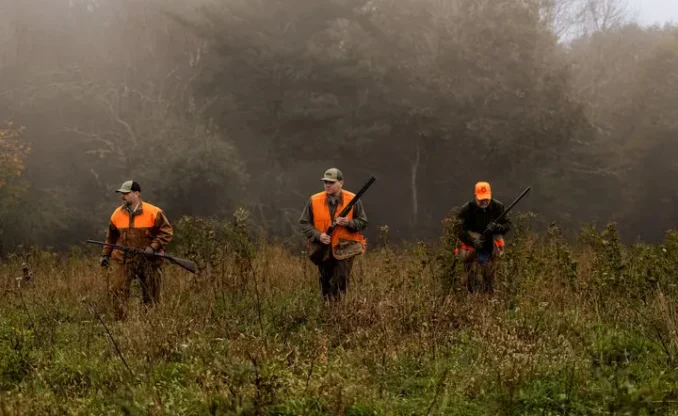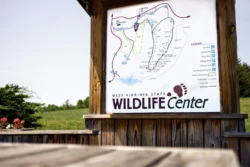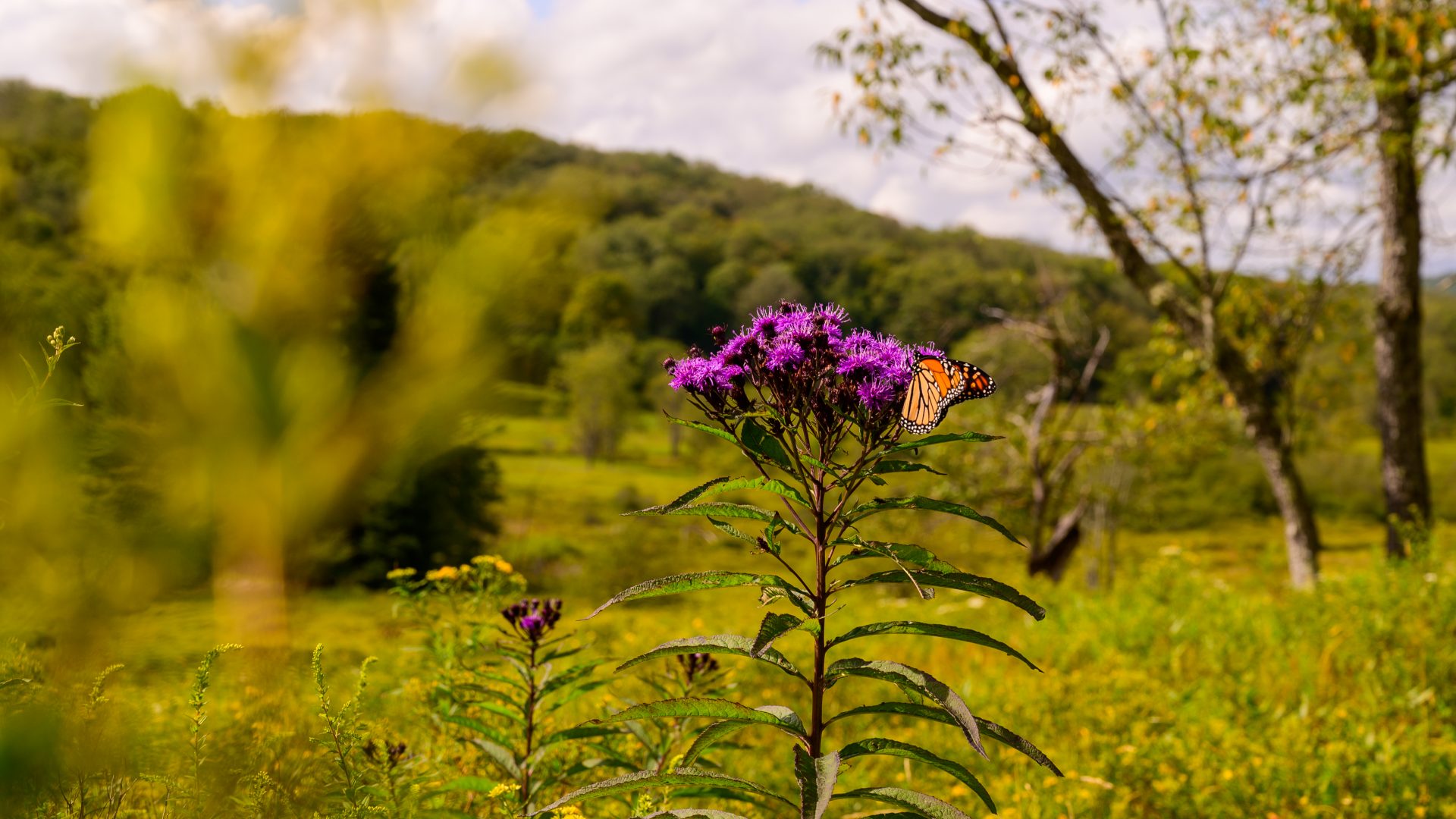The next time you notice a monarch butterfly, with its brilliant orange and black wings rimmed with white dots, take a good long appreciative look.
Monarchs used to number in the billions. Since 1976, the world population of monarch butterflies has declined by 96%. West Virginia’s monarchs, part of the eastern North America population, have dropped about 90%.
Fortunately, there are things that ordinary people can do to help.
The state of the state butterfly
The monarch was adopted as West Virginia’s official state butterfly in 1995. The legislative resolution noted that the monarch is “one of the most beautiful butterflies in the region” and “exists in abundance in West Virginia.”
The much-admired butterfly has also been named as the official state insect in Alabama, Idaho, Illinois, Minnesota and Texas. Vermont designated its state insect as the honeybee in 1978 but in 1987 named the monarch as the state butterfly.
A portrait of the majestic butterfly graces the month of July in the 2022 Wildlife Calendar by West Virginia Division of Natural Resources (WVDNR).
Despite its beauty and popularity, the monarch butterfly faces challenges to its survival.
In December 2020, the U.S. Fish and Wildlife Service announced that “adding the monarch butterfly to the list of threatened and endangered species is warranted” – but was not listed because the agency had too few resources to cover too many other high-priority needs. The agency will make a decision on listing the monarch in 2024.
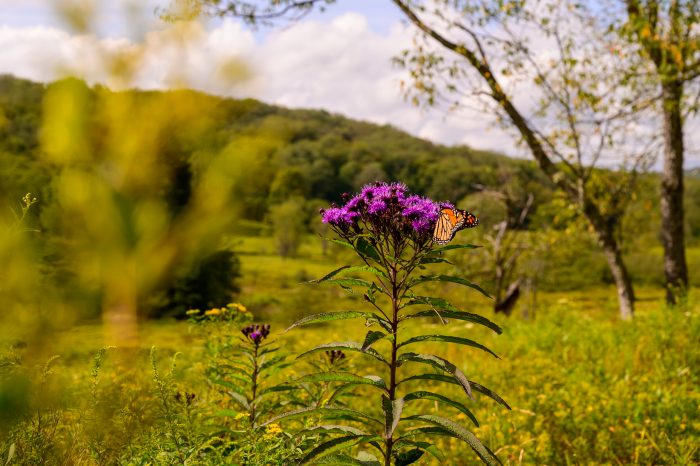
A journey of generations
To understand the problem – and how you can be part of a solution – you need to know the unusual life cycle of this migratory species.
Monarch “babies” need milkweed. As do all butterflies, monarchs start as eggs. The monarch mother lays her tiny eggs – about one millimeter long – on the underside of milkweed leaves. Within a few days, caterpillars emerge from the eggs, eat the egg casings and chow down on the milkweed plant.
Milkweed is the only plant that can nourish monarch caterpillars. Without milkweed, they die.
In its next stage of life, the caterpillar encases itself in a green chrysalis. In 10 to 14 days, the caterpillar transforms into a monarch butterfly. The insect emerges wet and crumpled, but while it rests patiently on its former shell, the monarch slowly brightens and unfurls its wings.
The adult monarchs dine primarily on nectar from milkweed and from flowers such as asters and coneflowers, which they may pollinate in the process.
“In the fall, monarchs migrate from as far north as Canada, down the U.S., to Mexico,” said Susan Olcott, biologist with the WVDNR Wildlife Resources section. “They light by the millions in oyamel fir forests of Mexico’s Sierra Madre Mountains. The forest provides – or at least has provided in past years – a cool, relatively moist micro-climate that maintains an even temperature. The butterflies are semi-dormant, scarcely moving.”
In a 2015 taped interview, Professor Douglas Tallamy, chair of the Department of Entomology and Wildlife Ecology at the University of Delaware, said the overwintering in Mexico is how we know just how drastically the monarchs’ population has declined.
“Ordinarily we would not know how many of a particular insect are left. However, monarchs migrate to the same place in Mexico every winter, in the mountains north of Mexico City.”
Scientists can observe, take aerial photos and count the entire migrating population of monarchs.
The oyamel fir trees grow only in high, cool elevations. Unfortunately, Mexico’s oyamel forest ecosystem is endangered. Logging has removed many trees and fragmented the micro-climate monarchs need to survive. Experts report that only 2% of the original forest remains.
As temperatures warm in spring, the butterflies begin their migration back north.
“The journey is too long to complete in a single generation,” Olcott said. “Traditionally, the butterflies stop along the way and lay their eggs on milkweed in fields.”
The natural order has always been that the adult monarchs die off, the eggs hatch caterpillars, and they grow into new adults who continue the migration north.
“Milkweed is the only food that monarch caterpillars can eat,” said Olcott. “But now much of their milkweed habitat is gone, mowed down or built over. So, the butterflies may have nowhere to stop, nowhere to lay their eggs, nowhere the caterpillars will find the food they need. They may not reproduce the next generation of monarchs to continue the journey north. Few survive.”
Grow more native milkweed – without pesticides
Along with climate change and pesticide use, lack of milkweed is a central part of the monarch problem. People growing more milkweed can be an essential part of the solution.
“We want people in West Virginia to consider where and how often we mow,” said Olcott. “Consider before you cut down wildflowers and milkweed in fields and roadsides. Perhaps instead of mowing the entire field in one blow, you can mow only a third of the field each year. That will allow monarchs and other wildlife to find food and shelter in what remains.”
Olcott recently led a workshop on pollinator conservation, hosted by the WVDNR and Toyota Motor Manufacturing West Virginia, Inc. The workshop presented ways landowners can help revive native pollinators.

“Our European ancestors brought over many plants that are not native here, because they reminded them of home. But native wildlife needs native plants,” she said. “West Virginia is home to 13 species of native milkweed. Milkweed plants are in the genus Asclepias. If you find a plant with a name that ends in ‘Maximus’ or something other than the genus and species, it means the plant has been ‘tweaked’ or engineered. Non-native or engineered plants may have altered pollen, nectar or chemical makeup that is not good for the monarch butterfly.”
The species most frequently used by monarchs are:
- Common milkweed (Asclepias syriaca)
- Swamp milkweed (Asclepias incarnata)
- Butterfly milkweed (Asclepias tuberosa)
That does not mean that landowners should root out every non-native plant in their landscapes.
“If your garden has 70% native plants, you are offering a nice diversity of plant life that can support an array of wildlife,” she said. “That still leaves you with 30% to play with if you wish to have non-native ‘grace notes’ in your garden.”
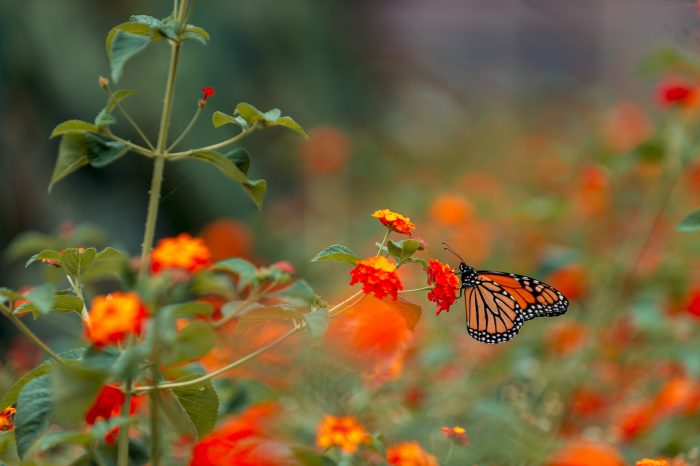
For more information about why and how to create your own garden for West Virginia’s official monarch butterfly and other wildlife, visit pollinator garden.

